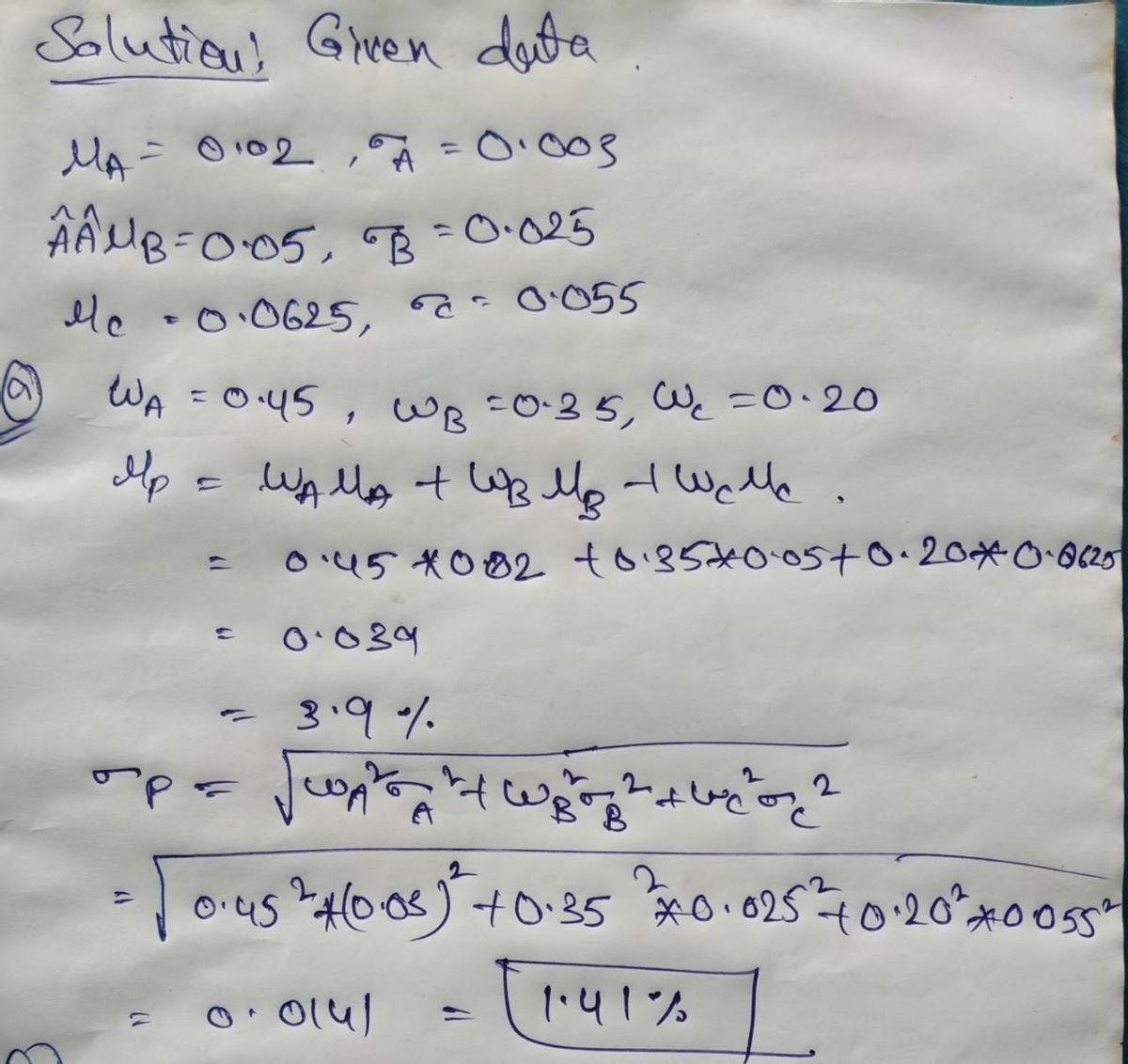Pak, with a seed of 1, to develop a Monte Carlos final answer to two decimal places. e after the first year changed to 30% short-term, 55% intermediate-t final answer to two decimal places. ce after the first year investment strategies in parts a and b and choo ge, the investment strategy in part a is more risk ge, the investment strategy in part a is less risky ge, the investment strategy in part a is less risky ge, the investment strategy in part a is more risk
Pak, with a seed of 1, to develop a Monte Carlos final answer to two decimal places. e after the first year changed to 30% short-term, 55% intermediate-t final answer to two decimal places. ce after the first year investment strategies in parts a and b and choo ge, the investment strategy in part a is more risk ge, the investment strategy in part a is less risky ge, the investment strategy in part a is less risky ge, the investment strategy in part a is more risk
MATLAB: An Introduction with Applications
6th Edition
ISBN:9781119256830
Author:Amos Gilat
Publisher:Amos Gilat
Chapter1: Starting With Matlab
Section: Chapter Questions
Problem 1P
Related questions
Question

Transcribed Image Text:An investor wants to invest $300,000 in a portfolio of three mutual funds. The annual fund returns are normally distributed with a mean
of 0.02% and standard deviation of 0.30% for the short-term investment fund, a mean of 0.05% and standard deviation of 0.03% for the
intermediate-term fund, and a mean of 0.062% and standard deviation of 0.07% for the long-term fund. An initial plan for the
investment allocation is 45% in the short-term fund, 35% in the intermediate-term fund, and 20% in the long-term fund.
a. Use Analysis ToolPak, with a seed of 1, to develop a Monte Carlo simulation with 100 trials to estimate the mean ending balance
after the first year.
Note: Round the final answer to two decimal places.
Mean ending balance after the first year
b. If the allocation is changed to 30% short-term, 55% intermediate-term, and 15% long-term, estimate the ending balance after the first
year.
Note: Round the final answer to two decimal places.
Mean ending balance after the first year
c. Compare the two investment strategies in parts a and b and choose the most appropriate answer from the following choices.
O On average, the investment strategy in part a is more risky and yields a lower return.
O On average, the investment strategy in part a is less risky and yields a higher return.
O On average, the investment strategy in part a is less risky but yields a lower return.
O On average, the investment strategy in part a is more risky but yields a higher return.
Expert Solution
Step 1

Trending now
This is a popular solution!
Step by step
Solved in 2 steps with 2 images

Recommended textbooks for you

MATLAB: An Introduction with Applications
Statistics
ISBN:
9781119256830
Author:
Amos Gilat
Publisher:
John Wiley & Sons Inc

Probability and Statistics for Engineering and th…
Statistics
ISBN:
9781305251809
Author:
Jay L. Devore
Publisher:
Cengage Learning

Statistics for The Behavioral Sciences (MindTap C…
Statistics
ISBN:
9781305504912
Author:
Frederick J Gravetter, Larry B. Wallnau
Publisher:
Cengage Learning

MATLAB: An Introduction with Applications
Statistics
ISBN:
9781119256830
Author:
Amos Gilat
Publisher:
John Wiley & Sons Inc

Probability and Statistics for Engineering and th…
Statistics
ISBN:
9781305251809
Author:
Jay L. Devore
Publisher:
Cengage Learning

Statistics for The Behavioral Sciences (MindTap C…
Statistics
ISBN:
9781305504912
Author:
Frederick J Gravetter, Larry B. Wallnau
Publisher:
Cengage Learning

Elementary Statistics: Picturing the World (7th E…
Statistics
ISBN:
9780134683416
Author:
Ron Larson, Betsy Farber
Publisher:
PEARSON

The Basic Practice of Statistics
Statistics
ISBN:
9781319042578
Author:
David S. Moore, William I. Notz, Michael A. Fligner
Publisher:
W. H. Freeman

Introduction to the Practice of Statistics
Statistics
ISBN:
9781319013387
Author:
David S. Moore, George P. McCabe, Bruce A. Craig
Publisher:
W. H. Freeman